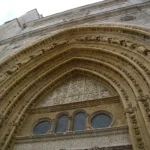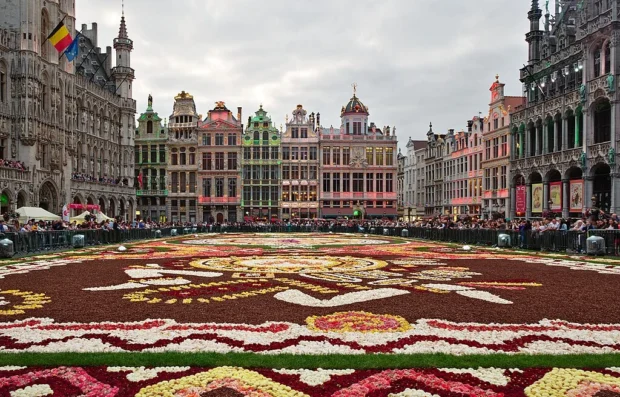Brussels, Belgium’s beating heart, reveals itself most magnificently at the Grand Place. This iconic square blends history, artistic craftsmanship, and urban morphology into a living tableau. For travelers drawn to architectural conservation and the evolution of design movements, the Grand Place offers a symphony of Gothic, Baroque, and Louis XIV styles harmoniously aligned. Nestled in the city center, this plaza has witnessed centuries of political power, market life, and cultural exchanges. From its monumental guildhalls to the ornate Town Hall, every stone and spire tells a story that invites you to see beyond mere beauty.
Table of Contents
Whether arriving from Brussels Airport, the bustling Gare Centrale, or simply strolling from nearby accommodations, the Grand Place remains the fulcrum of city life. Culinary delights from local eateries, particularly the rich waffles and hearty Belgian stews served just steps away, enhance the experience. This guide will walk you through directions, essential visiting tips, historical insights, and reservation pointers-perfect for anyone eager to immerse themselves in the architectural and cultural fabric of Brussels.
After visiting the Grand Place, you might enjoy reading about Brussels city highlights and tips to experience more of the local culture and daily life.
Finding Your Way to Brussels’ Grand Place
The Grand Place is centrally located and exceptionally accessible. From Brussels Airport, a direct train connects you to Gare Centrale (Brussels Central Station) in about 20 minutes. Exiting the station, it’s a short walk through narrow cobbled streets, guided by the soaring spire of the Town Hall.
If you arrive by Metro, the stations “Gare Centrale” and “De Brouckère” place you within a few minutes’ walk from the square. For those who prefer buses or trams, lines 3, 4, 31, and 92 stop near the Grand Place.
Should you prefer to explore on foot from your accommodation, the experience of wandering through the adjacent quarters reveals the urban morphology of Brussels, where medieval street patterns meet modern life-an architectural dialogue itself.
For travelers captivated by medieval urban beauty, the charming streets of Tallinn Old Town offer a fascinating continuation of Europe’s preserved historic centers.
Craftsmanship and Proportion: Architectural Highlights
The Gothic Majesty of the Town Hall
The Town Hall, built between the 15th and 16th centuries, commands the square with its slender spire pointing heavenward. Crafted with remarkable precision, its façade is an orchestration of statues representing nobles, saints, and allegorical figures. Observing the play of light across its stone surfaces illuminates the masterful use of proportion and balance that defines Gothic civic architecture.
Guildhalls: Baroque and Louis XIV Flourish
Surrounding the square, 17th-century guildhalls display sumptuously decorated façades, their opulence a testament to the economic vitality of Brussels’ trade guilds. Rich gilding, sculpted reliefs, and intricate stonework represent a confluence of Baroque exuberance and French classical influences. Each guildhall was a statement of pride and identity, reflecting its members’ crafts and social standing. This ensemble, painstakingly restored after damage sustained in the 1695 bombardment, speaks volumes about architectural conservation efforts over centuries.
Historic Role and Cultural Significance of the Square
Originally a marketplace established in the early 12th century, the Grand Place developed into a vibrant public square where power and commerce intertwined. It bore witness to political decrees, public gatherings, and festivals, cementing its role as the city’s social nucleus. The 1695 bombardment by French troops nearly razed the square, but resilient Brusseleers rebuilt it with renewed grandeur, forging the architectural identity visible today.
The square’s designation as a UNESCO World Heritage Site underscores its universal value as a masterpiece of urban ensemble. For those interested in historical transitions, the Grand Place encapsulates shifts in political regimes and artistic tastes, from medieval order to Baroque flamboyance.
Visitor Recommendations for Optimal Experiences
Visiting the Grand Place rewards those who plan thoughtfully. Weekdays before noon tend to be quieter, allowing closer appreciation of details without crowds. The square also comes alive during annual events like the Flower Carpet in August, presenting a spectacular floral mosaic that transforms the entire plaza.
Evenings reveal a different charm when strategic lighting accentuates architectural elements, ideal for photographers fascinated by light and shadow interplay on historic surfaces.
For those captivated by Baroque architecture and elegant artistry, the Belvedere Palace in Vienna presents a splendid continuation of this cultural journey.
- Arrive early to avoid peak tourist hours and see the square’s details in soft morning light.
- Check event calendars for seasonal markets or cultural festivals enhancing the visit.
- Wear comfortable shoes; the cobblestones, while picturesque, can be uneven.
- Carry a camera or sketchbook to capture the interplay of materials and forms.
Guided Tours and Reservation Insights
A guided tour greatly enriches the visit, offering stories behind the façades and explaining the symbolism embedded in sculptural programs. Official walking tours often include access to the Town Hall’s interior, where the craftsmanship continues beyond the façade, with richly decorated rooms and historic artifacts.
Reservations for these tours can be secured via the official tourism website, which also provides updates on temporary exhibitions or restoration works that might affect access.
For those interested in architectural photography, special evening or restricted access tours occasionally open the square for unique vantage points. Booking in advance is advised to guarantee spots.
Nearby Stays and Local Flavors to Savor
Accommodation around the Grand Place ranges from boutique guesthouses to modern apartments, many housed in architecturally significant buildings themselves. Staying close provides uninterrupted immersion in the city’s rhythms.
For dining, nearby cafés serve traditional Belgian dishes-think rich carbonnade flamande or the famed moules-frites-set in interiors that reflect Brussels’ blend of old and new. Sampling local Belgian beer or a refined hot chocolate adds to the sensory palette of your visit.
Official Site for More Details
For comprehensive information, including official tour bookings, events schedule, and visitor guidelines, please check the Grand Place official tourism page.

- 2018 flower carpet at Grand Place, Brussels (DSCF6849) by Trougnouf (Benoit Brummer) on Wikimedia Commons – cc by 4.0
